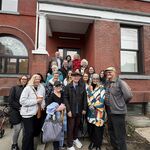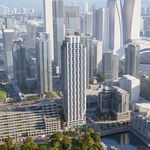Andy Byford wants cars out of the way of the city’s buses — and
enforcement cameras will do it better than cops.
Automated enforcement succeeds where police officers fail because cameras are “constantly present,” the NYC Transit president told reporters after Thursday’s MTA board meeting.
“It’s unsustainable to expect police to be at every intersection,” Byford said. “We’ve got to have something that’s much more present — that’s absolutely understood by New Yorkers: Don’t go in that bus lane. You will get filmed, you will get fined.”
Byford added that he wants to put enforcement cameras on every bus — something state law currently prohibits.
“You can’t rely on having a cop on every corner,” he said. “I would have forward-facing cameras on all the vehicles, that could recognize license plates.”
Byford’s comments come two days after Streetsblog reported on a tiny NYPD
bus lane enforcement initiative that will last just one week. NYPD has increased its enforcement of blocking bus lanes,
but to little avail, as Streetsblog also reported: Travel speeds remain more or less flat, having increased just .1 miles per hour, or 1.2 percent, on average between October 2017 and last month, according to MTA data [
PDF – Page 68].
The NYPD’s latest initiative, which began on Monday, is a rather tepid step. On Thursday, the police department informed Streetsblog that the seven-day enforcement blitz would target “all bus stops and bus lanes,” a lofty goal, albeit only through Sunday.
After that brief spike in tickets, things will likely
go back to normal. The initiative could send bus lane violators a strong message, or not.
As the city’s speed camera program has shown, automated enforcement would have a much larger impact. Despite being deployed in just 140 school locations, the speed cameras issued more than 4.6 million tickets between 2014 and this past summer. Over the same time period, the NYPD’s 38,000 officers dolled out just 519,372 speeding violations.
State law currently limits bus lane cameras to the city’s 16 Select Bus Service routes, a tiny fraction of the 252 routes citywide. Byford said expanding that authorization is on the MTA’s “shopping list” of requests for the state legislature.
It remains to be seen, however, how high a priority cameras will be, given how much Byford needs from the state legislature if he has any hope of fixing the cash-strapped agency and its crumbling stations, outdated equipment, and World War II-era signals.
“It’s certainly going to be one of our submissions to Albany,” he said. “This will be a very useful piece of legislation to have.”
Unfortunately for Byford, camera enforcement could be a political minefield.
Three years ago, the SBS bus lane cameras passed the Assembly with just 79 votes in favor and 60 against, a narrow margin given the fact that two-thirds of the seats in the chamber are filled by New York City lawmakers.




